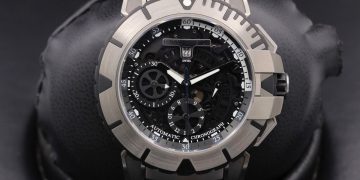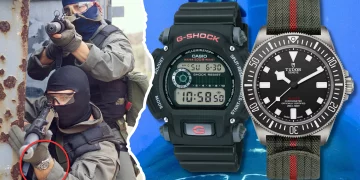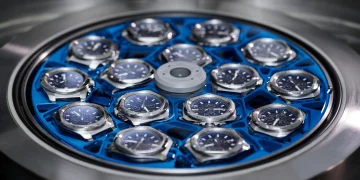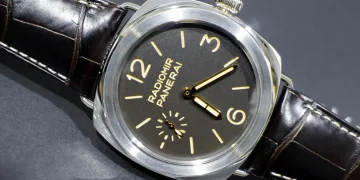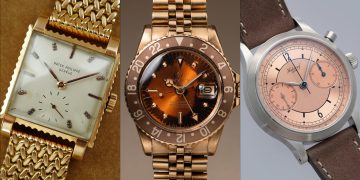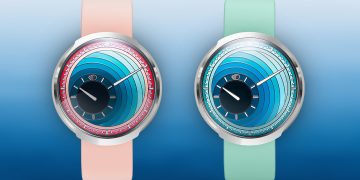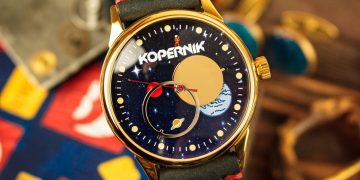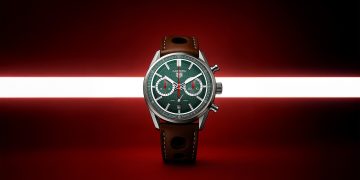Introduction:
Watches have always been more than just timekeeping devices—they are symbols of craftsmanship, precision, and personal style. Whether it’s a simple wristwatch or a luxury timepiece, accuracy plays a crucial role in its performance and reputation. In recent years, the quest for perfect timekeeping has led to innovations in watchmaking, from traditional mechanical movements to advanced quartz and even smartwatches with incredible accuracy.
When a watch claims to be highly accurate, it’s important to ask: Is this claim genuinely impressive, or is it just marketing hype? Can we really rely on the precision of modern watches, and what factors influence a timepiece’s accuracy? This article will delve into the factors that contribute to a watch’s accuracy, the different types of movements, and whether or not a watch’s accuracy is worth praising in today’s high-tech world.
1. Understanding Watch Accuracy
To understand whether a watch’s accuracy is worth praising, it is essential first to define what “accuracy” means in the context of horology (the study and measurement of time). Accuracy in watches refers to how closely a timepiece’s displayed time matches the actual time, usually measured in seconds per day.
For instance:
- A watch might be accurate to within ±10 seconds per day, meaning that every 24 hours, the watch’s time might be 10 seconds ahead or 10 seconds behind.
- A more precise watch could have an accuracy of ±2 seconds per day, or even more impressive, closer to ±1 second per day.
In professional settings, certain timepieces are expected to adhere to strict accuracy standards. For example, watches certified by COSC (Contrôle Officiel Suisse des Chronomètres), a Swiss organization that tests chronometers, must meet specific accuracy criteria. Similarly, some brands like Rolex and Patek Philippe are renowned for their highly precise movements.
2. Types of Watch Movements and Their Impact on Accuracy
The accuracy of a watch is closely linked to the type of movement it uses. There are three primary categories of movements: mechanical (automatic and hand-wound), quartz, and digital (smartwatches). Let’s explore how each movement type affects accuracy.
Mechanical Movements:
Mechanical movements, often considered the pinnacle of traditional watchmaking, rely on intricate gears and springs to keep time. The accuracy of mechanical watches can vary significantly due to the complexity of the movement. Factors such as the balance wheel’s oscillations, the escapement mechanism, and the power reserve all influence accuracy.
- Automatic Watches: These are self-winding watches powered by the motion of the wearer’s wrist. While automatic watches are often highly respected for their craftsmanship, they can be less accurate than quartz movements due to the potential for slight friction and inconsistencies in the winding mechanism.
- Hand-Wound Watches: These require manual winding and can offer slightly more consistent performance than automatic watches because they don’t rely on the wrist movement to generate power. However, mechanical watches in general can still vary in accuracy, often within a range of ±10 to ±20 seconds per day.
Quartz Movements:
Quartz watches, powered by the oscillations of a quartz crystal, are widely recognized for their exceptional accuracy. The most common quartz watches can be accurate to within ±15 seconds per month, a feat that most mechanical watches cannot match. Quartz movements are less affected by external factors like temperature and gravity, which can impact the performance of mechanical movements.
Smartwatches and Digital Movements:
Smartwatches, powered by digital technology, can offer nearly perfect timekeeping accuracy, often syncing with atomic clocks via GPS signals or internet connections. In terms of raw accuracy, these watches are unparalleled, often boasting a deviation of just a few milliseconds per day.
3. Factors Affecting Watch Accuracy
While the type of movement plays a significant role in a watch’s accuracy, several external factors can also influence performance. These include:
Temperature:
Changes in temperature can cause metal parts within a mechanical movement to expand or contract, impacting the balance wheel’s oscillation and, consequently, the accuracy of the watch. Quartz movements, on the other hand, are generally less sensitive to temperature fluctuations, although extreme conditions can still have an impact.
Magnetism:
Magnetic fields can interfere with the movement of a mechanical watch, leading to inaccuracies. Modern watches often feature anti-magnetic properties, but some vintage models or less expensive watches may be more susceptible to magnetism. Quartz movements are less prone to this issue.
Positioning:
The position in which a watch is kept (e.g., face up, face down, crown up, or crown down) can affect its accuracy, particularly for mechanical watches. Watches with automatic movements are sensitive to gravity and may experience variations in performance depending on their orientation.
Wear and Tear:
Over time, mechanical movements can experience wear and tear, particularly in the gears, escapement, and balance wheel. Regular servicing is necessary to maintain optimal accuracy. Quartz watches typically require less maintenance but may need a battery change periodically.

4. How Do Watch Brands Ensure Accuracy?
Premium watch brands often go to great lengths to ensure their timepieces are as accurate as possible. For example, brands like Rolex and Omega have developed proprietary technologies to improve timekeeping precision.
- Rolex’s Superlative Chronometer Certification: Rolex watches are tested for accuracy far beyond the COSC standards. Their Superlative Chronometer certification ensures that the watch is accurate to within -2/+2 seconds per day, a remarkable achievement for a mechanical timepiece.
- Omega’s Master Chronometer: Omega’s Master Chronometer certification, developed in partnership with METAS (Swiss Federal Institute of Metrology), involves rigorous testing in magnetic fields, temperature fluctuations, and other real-world conditions. It guarantees an accuracy of -0/+5 seconds per day for their mechanical watches.
5. Is Watch Accuracy Worth Praising in Today’s Context?
Given the rapid advancements in timekeeping technology, one might ask: Is accuracy still as important today as it once was? In the modern world, the practical need for extremely accurate timekeeping has diminished. With the advent of smartphones, GPS systems, and other digital devices, many people now rely on their phones for the most precise timekeeping. So, is a mechanical watch’s accuracy worth praising, or is it simply an aesthetic and historical appeal?
While modern technology has made ultra-precise timekeeping easily accessible, the appeal of a high-precision mechanical watch lies in the craftsmanship, tradition, and engineering behind it. For collectors and enthusiasts, a watch’s accuracy can still be a point of pride. It’s a testament to the skill and knowledge passed down through generations of watchmakers.
6. Conclusion: The True Value of Accuracy
Ultimately, whether or not the accuracy of a particular watch is worth praising depends on what you value in a timepiece. For some, the pursuit of perfect timekeeping is the pinnacle of horological achievement. For others, the art of craftsmanship, design, and tradition holds more value than raw precision. However, in a world where technology has made precision nearly ubiquitous, the quest for accuracy in a mechanical watch continues to be a fascinating blend of science, art, and history.



